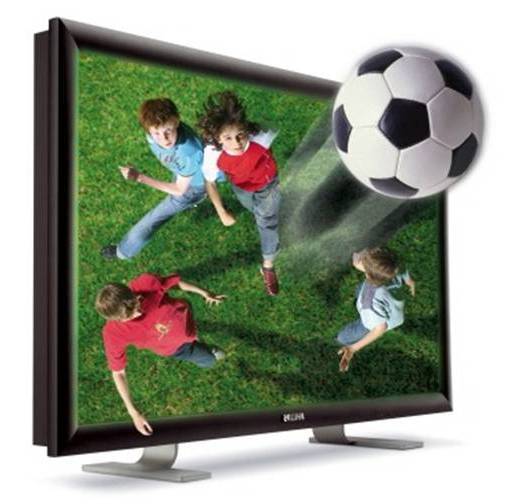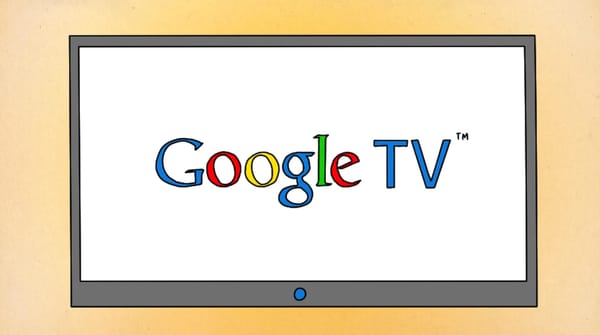3D's Back Baby! You Ready?
3D TV's back but what does it mean for you?

The age of the red-and-blue grainy cliché is over! Cast aside your cheap cardboard spectacles and make way for a new era of unparalleled 3D realism accompanied by spectacular picture quality. However, instead of overpriced cinema screenings the revolution is going to happen right in your front room, changing the televisions and video games we know and love for ever.
At least, that’s what television manufacturers would like us to believe, as they prepare a fresh wave of new ‘3D-ready’ screens for release throughout this year and next. But as with any new technology, consumers are left with very big questions that need answering. Where has this new 3D technology come from? What will I need, and how much will it cost? Is there going to be any trouble for early adopters? Is it really worth it?
From the Big Screen to the Small Screen
Most of us will now be pretty familiar with the idea of watching 3D movies in a cinema with many notable films pushing beyond the use of 3D as a novelty effect and instead using the technology in a much more integral way. With the box office success of films like Avatar, which was shown in both IMAX 3D and in regular cinema 3D, television manufacturers are now bringing to market all their 3D prototypes to try and cash in on increased interest in viewing in the third dimension. In fact, 3D television is not a new concept with broadcasters like the BBC transmitting 3D specials of Doctor Who in 1993 and Coca-Cola trying out the same technique for a Super Bowl commercial as early as 1989. More recently, Channel 4’s ‘3D Week’ showed documentaries and images of the Queen in 3D using pairs of the classic red-and-blue cardboard glasses.
The difference this time around however is that the television industry is now focussing on ‘real 3D’ that doesn’t distort images or ruin colours. The current idea is to send different television images to each eye directly instead of filtering based on colour. This has recently been made possible by improvements in television and broadcast technology. There are three main approaches being used by manufacturers referred to as ‘passive 3D’, ‘active 3D’ and ‘auto-stereoscopic viewing’.
Passive or Active?
Most of you will be at least be familiar with passive 3D, which is the same system that is used in cinemas. The television display is ‘polarised’, only emitting light in a specific way, with viewers having to wear a set of glasses whose lenses have also been ‘polarised’. Polarisation is changed on each successive frame and when viewing the programme through the glasses each frame is only seen by one eye. Hardware manufacturer LG has announced at least one display (the LD950) that will use this approach. A lower price is the primary benefit of this system, with sets costing up to £200 less than the other methods in use. The 3D glasses required are also relatively cheap and are likely to set you back only around £5-10 a pair. The downside is a reduction in brightness and around about 30% colour loss.
Alternatively you have active 3D, also referred to as ‘alternate frame sequencing’, which uses a more high-tech set of glasses to create the 3D effect. Each pair of glasses has a liquid crystal display instead of a lens that, when a voltage is applied across it, turns dark and opaque (using the same idea as displaying numbers on a digital watch). Pairs of glasses are synchronised via infra-red or RF to the television that tells the glasses which eye should be open and closed at any one time. This creates the desired 3D effect by ensuring individual frames can be sent to individual eyes. Active shutter technology is by far the most popular choice with almost every major TV manufacturer having a device in the marketplace using this technology meaning it’s set to become the standard in some form for 3D viewing. Both glasses and screens are quite expensive however, coming in at around £2000 for a 46” TV and £60-100 for each pair of glasses.
Auto-what now?
If the prospect of donning an oversize set of specs is worrying you, auto-stereoscopic displays may have the answer. These sets don’t require any kind of accessory for the user to wear, instead using a lenticular sheet, or parallax barrier, to show the image across multiple viewing angles. With enough different angles each eye will receive a different picture and so observe a 3D effect.
Auto-steroscopic technology also holds the possibility of allowing viewers to quite literally tilt their head to see behind an object on the screen, using a sufficiently large amount of data to present different images at different angles. However, the effect can cause a loss of picture quality and isn’t as noticeable as the other methods.
Phillips used this effect in their WOWvx product line as early as two years ago, but they have since dropped the range stating that they ‘didn’t want to enter a format war’ over 3D technology standards. Most of the current offerings are aimed at advertisers, although the technology does seem to be gaining use on portable devices. Hitachi will soon be the first to release a 3D phone screen in Japan, whilst Nintendo announced that the next version of their popular hand-held games console, the Nintendo 3DS (see what they did there?), will use the effect.
Format war immanent?
As may be evident, there is currently a lack of consensus in the television industry as to which implementation of 3D TV viewing is best. Thankfully, Sky TV have already announced their 3D Sky+ box will work on all displays without worry. At the moment though, each manufacturer has it’s own proprietary system for controlling glasses and polarisation. Not only may this lead to another format war of some kind (anyone remember HD-DVDs?), which is bad news for early adopters, but it’s also frustrating for consumers as it means glasses from different companies aren’t compatible with each other.
The glasses issue is also a sticky subject. Right since it’s first broadcast, watching television has been a social experience with as many people able to watch as can be fit into the room. It may be the case however, that 3D TV is set to mess with this stereotype requiring every viewer to adorn glasses, which in large families could get very expensive very quickly. It also raises questions over watching with friends, as anyone without a pair of glasses can’t take part in the 3D experience. Lack of standards for glasses also means that even friends with their own glasses could only watch if they have the same model of TV, or in some cases wear the glasses upside down.
3D movies in the home
To get a full 3D experience for films in the home you’ll also need a new Blu-ray player. Normal discs aren’t set up in the right way to handle 3D content and so there has recently been the introduction of 3D Blu-ray discs, which require a compatible 3D Blu-ray player to read them. An interesting point is that these discs can actually be used on a standard 2D Blu-ray player without issue, so it may be prudent to start buying new Blu-ray films in 3D as an investment for the three dimensional future.
But what can I actually watch in 3D?
Even after shelling out for your new television, new glasses, new Blu-ray player and new Sky+ box, you may still struggle to actually watch any 3D content at all. Although Sky have now launched their dedicated 3D channel they have said that it was a ‘difficult’ process, mainly due to a ‘lack of 3D content’. The fact is that apart from a few films (be prepared to watch Monsters Vs. Aliens a lot) and a smattering of 3D channels that tend to show live sport, there isn’t actually all that much available to watch in 3D. Making 3D programming is still a difficult process. Studios need to upgrade nearly all of their equipment if they want to make 3D shows, and so it will probably still be a long time before there is significant quantity of things to watch using your new 3D television.
Given the high set-up costs, lack of programming and the possible destruction of what little social interaction families have left, it’s hard to see why anyone would want to bother with 3D television. Certainly, for the average consumer the time has probably not yet come, to make the change to 3D, but early adopters will be suitably impressed by the ‘wow’ factor that 3D brings. In time, all TVs will support 3D naturally, like nearly all new displays support HD now. With this in mind, a three-dimensional television could be a sound investment. At any rate, the message from the television industry is clear: 3D TV is here to stay.









